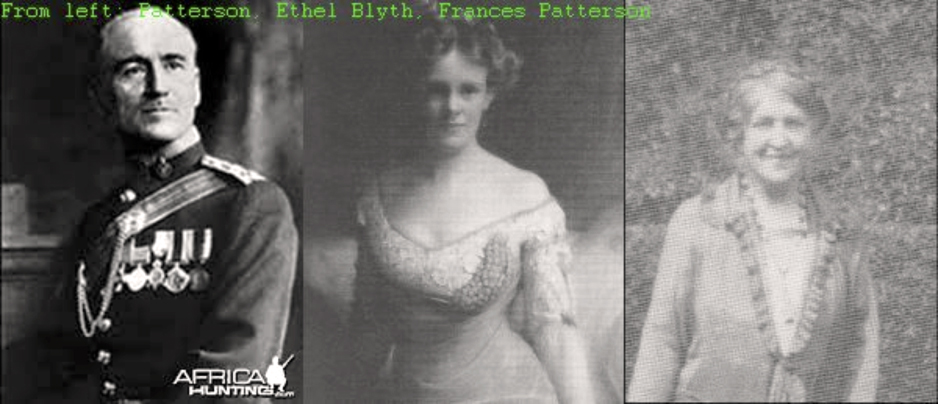Many of you will have heard of John Henry Patterson, the man who shot the man-eating lions threatening the workers on the Mombasa-Lake Victoria railway line. He was in charge of building the railway bridge across the Tsavo River when the lions went on their murderous spree, and he succeeded in eliminating them. The book that he wrote describing the episode was a bestseller in its time and is still readily available, more than a hundred years later. But what became of Patterson? Did he fade into obscurity?
In reality, Patterson’s subsequent life was full of incident. He achieved notoriety following a marital scandal and, later, fame in Israel. He himself was not Jewish, but rather of northern Irish Protestant stock. His parentage is unknown, though it has been suggested that he was born in 1867, the illegitimate son of a landed Irish family. He joined the army and served in India and South Africa. Meanwhile, in 1895 he married an unusual woman, Frances Helena Gray, a headmistress who had been one of the first to gain a BA in Pure Science and a Doctorate of Law. He then left for Kenya to build bridges for the railway, leaving his wife in England. In 1907 he was appointed a game warden in Kenya, and it was while he was conducting a married couple on safari, Ethel and Audley Blyth, that disaster struck. Audley shot himself in his tent under suspicious circumstances. Patterson buried him on the spot and continued with the safari, accompanied by Ethel. It was said that they shared a tent. It was some time before they returned to Nairobi, and they travelled back to England together on the ship.
There was a scandal, not helped by Winston Churchill weighing in with accusations. But Patterson’s wife welcomed him back. She had had two babies in previous years, but both had died. However, nine months after Patterson’s return a baby boy, Bryan, appeared in the Patterson household. He cannot have been Frances’s son, or there would have been a birth certificate to say so. In fact, many years later, when Bryan had grown up and was trying to get US citizenship, he was astounded to find that his birth certificate said he was born in Hampstead as Lionel Brown, son of James Brown, civil engineer, and his wife Elinor, née Miller. No such people exist in the official records. Patrick Streeter, Patterson’s biographer, thinks that the boy was the child of Patterson and Ethel. Possibly Patterson’s wife Frances did not know this or she may have connived in the deception, happy to acquire a baby at last.
The family then spent a busy few years, travelling widely – they were friends of Theodore Roosevelt in America. Patterson wrote further books and rejoined the army, fighting in the First World War, as leader of the Zionist Mule Corps and Jewish Legion. He became an ardent Zionist, and for the rest of his life worked to further the Zionist cause. He became close to the pioneer Zionists Zeev Jabotinsky and Benzion Netanyahu (father of the current Israeli Prime Minister). In 1940 he moved to La Jolla, California, where he lived out his days with his wife in a small bungalow, until he died in 1947. His exploits in Kenya were dramatised in films and in the tale written by Ernest Hemingway – The Short Happy Life of Francis Macomber. As for his son Bryan, he became Professor of Vertebrate Paleontology at Harvard University and was well known in his field. Recently Patterson’s claim that the Tsavo lions killed 135 railway workers has been challenged as an exaggeration, but this does not detract from his bravery in putting an end to the animal scourge. There is much about Patterson’s life that is speculative, but it is incontrovertible that he helped to create the state of Israel.
If you want to know more about Patterson, there are two interesting books: Patrick Streeter, Mad for Zion, a Biography of Colonel J.H. Patterson, 2004, and Denis Brian, The Seven Lives of Colonel Patterson, 2008.


Recent Comments